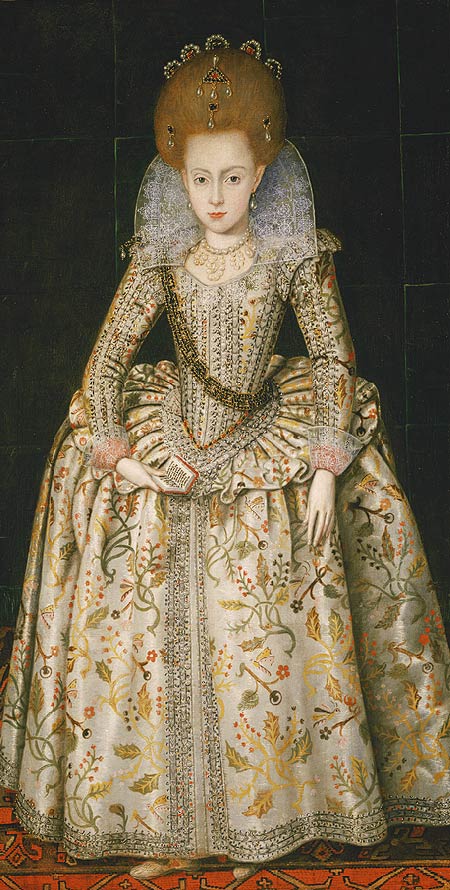The Christening of Elizabeth Stuart
28th November 2019

Elizabeth Stuart was christened today in 1596, at Holyrood Palace in Edinburgh. She was the daughter of James VI of Scotland and Anne of Denmark, and had been born in August that year, named after the ageing Queen Elizabeth I – her godmother and first cousin, thrice removed.
It was not a particularly lavish christening, despite Elizabeth’s status as a princess. This was partly because she was a girl and the second child of her parents – her brother Henry Frederick had been born two years previously. While his birth had prompted celebrations among the people, a princess was of less importance. But it was also due to her father’s frugality. Scotland was not a rich country. A christening held during the cold and dark month of November ensured a smaller guest list and what’s more, James informed those who did decide to come that they must bring their own dinner!
The quiet christening is typical of Elizabeth’s early years, which were unremarkable – comfortable, but not extravagant. That changed in 1603 when Elizabeth I died and James became James I of England, and the six year old Princess Elizabeth learned that it was very different to be a princess of England than one of Scotland.
James was now king of a country far richer than Scotland, and Elizabeth and her two brothers Princes Henry Frederick and Charles enjoyed the benefit of that. She moved south and was placed under the care of Lord and Lady Harrington at Coombe Abbey, a large and lavish estate. Elizabeth now had a variety of servants and tutors, her own doctor and seamstress, chefs to prepare her food, and plenty of groomsmen to take care of the twenty horses she was given.
In this way, Elizabeth’s life mimicked that of her grandmother, Mary Queen of Scots. She too had lived frugally in Scotland for the first five years of her life. When she was engaged to the Dauphin she was sent to France, where she grew up in the opulence of the French court.
The one exception to Elizabeth’s happy young life was when the conspirators of the Gunpowder Plot planned to kill the king and the two princes by blowing up Westminster on the first day of Parliament in 1605. They intended to kidnap Elizabeth and place her on the throne as a Catholic queen that they could control. This plot was foiled, and Elizabeth is reported to have said, “What a queen should I have been by this means? I should rather have been with my Royal Father in the Parliament House than wear his crown on such condition.”
Her elevation to Princess of England rather than Scotland also made her more desirable on the royal European marriage market, and Elizabeth had a number of suitors. Her mother in particular aimed high for Elizabeth’s marriage. Anne of Denmark was the daughter of a king, sister of a king and wife of a king and was keen for her daughter to also be a queen. But James decided that Elizabeth would marry Frederick V, Elector Palatinate of the Rhine. The two were married in 1613 and despite the disapproval of Elizabeth’s mother, love blossomed and their marriage was a happy one.
But Elizabeth would briefly become a queen. In 1619, Frederick was offered the throne of Bohemia, which he accepted. Elizabeth’s time as queen of Bohemia lasted only a year before the Holy Roman Emperor Ferdinand II, who had expected to claim the crown of Bohemia before the nobles revolted, defeated Frederick’s forces at the Battle of White Mountain. Frederick became known as the Winter King due to the season of the battle and the shortness of his reign, while Elizabeth is remembered as the Winter Queen.
Image: Princess Elizabeth (1596–1662), later Queen of Bohemia, by Robert Peake the Elder, c.1606, via Wikimedia Commons.